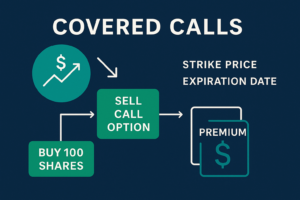Introduction
Employers need more insight to uncover the true value of their pharmacy benefit offerings. Traditional Pharmacy and Therapeutics (P&T) committees focus primarily on clinical safety and efficacy, and employers are often not a part of the meaningful cost-benefit analyses.
Enter P&T as a Service (P&TaaS)—a streamlined model designed specifically for self-funded employers. P&TaaS offers clear, unbiased guidance on whether a drug’s clinical benefit justifies its cost, enabling employers to make smarter decisions about their healthcare spending and see the underlying cost drivers.
The Core of P&TaaS: Is It Worth It?
Healthcare spending often involves trade-offs. For example:
- If Drug A and Drug B offer the same safety and benefit profiles, but Drug A costs twice as much, the choice is simple—go with Drug B.
- But what about when a drug offers marginally better outcomes at a significantly higher cost? Is 1 extra point on a 100-point clinical scale worth an extra $1,000/month?
This is where P&TaaS excels. Through clinical expertise and data-driven cost evaluations, P&TaaS consultants guide employers on what’s “worth it” for their workforce.
Compensation Models: Making P&TaaS Affordable and Sustainable
- Administrative Fee Model
Employers pay a flat monthly fee for ongoing access to P&T consulting services, including formulary evaluations, population-adjusted formularies, drug utilization reviews, and strategic guidance. This model ensures predictable costs and allows employers to budget effectively.
Example: $1,500-$3,000 per month for small-to-mid-sized employers, scaling based on workforce size and service scope.
- Cost Savings Benchmark Model
P&TaaS consultants share in the savings they generate. Employers pay a performance-based fee tied to cost reductions achieved through smarter formulary management and cost-optimization strategies.
Example: If P&TaaS saves an employer $500,000 annualized from baseline by avoiding unnecessary high-cost medications, consultants may receive 10-20% of the realized savings. This ensures alignment between employer and consultant priorities.
These compensation models ensure affordability for employers while rewarding P&TaaS consultants for delivering measurable value.
Why Employers Need P&TaaS
- Transparent Formulary Decisions
Employers often rely on Pharmacy Benefit Managers (PBMs) whose recommendations are driven by opaque rebate arrangements. Spread pricing likely exists. P&TaaS provides unbiased, data-backed advice that prioritizes employer and employee needs. - Cost-Conscious Clinical Oversight
By integrating financial data into clinical decision-making, P&TaaS ensures that employers don’t overpay for marginal improvements. - Tailored Guidance for Unique Needs
Every employer’s workforce is different. P&TaaS considers population health trends, workforce demographics, and specific employer goals to recommend the best coverage strategy.
How P&TaaS Works
- Clinical and Financial Assessment
A panel of independent experts evaluates drugs based on safety, efficacy, and cost. The result? Clear, actionable recommendations. - Collaborative Consultations
Employers partner with P&TaaS consultants to understand the implications of adding or removing a drug from their formulary. - Flexible Models
P&TaaS can complement existing PBM arrangements or work as an independent advisory service.
Case Example: Real-World Impact of P&TaaS
Imagine a self-funded employer with 5,000 employees, spending $10 million annually on pharmacy benefits. The employer’s PBM recommends adding a new high-cost medication with only modest benefits over alternatives.
Without P&TaaS: The employer approves the recommendation, adding $500,000 in annual costs.
With P&TaaS: Consultants evaluate the drug’s marginal clinical benefit and find it doesn’t justify the cost. Instead, the employer directs coverage to a comparable, lower-cost option, saving $450,000/year while maintaining quality care for employees.
Under the cost savings benchmark model, P&TaaS consultants might earn 10% of those savings ($45,000), aligning their success with employer outcomes.
Why Choose P&TaaS?
Employers don’t just want cost savings—they want confidence in their decisions. P&TaaS equips them with:
- Unbiased expertise free from PBM incentives.
- Actionable insights that blend clinical rigor with financial responsibility.
- A path to sustainable healthcare spending that benefits both employees and the bottom line.
FAQs
What is P&T as a Service (P&TaaS)?
P&TaaS is a consulting model designed for employers, offering unbiased guidance on formulary decisions that balance clinical benefit with cost-effectiveness.
How is P&TaaS different from traditional P&T committees?
Traditional committees focus primarily on clinical safety and efficacy. P&TaaS integrates financial considerations, making it more applicable to employers looking to optimize healthcare spending.
Who can benefit from P&TaaS?
Self-funded employers, health plans, and organizations seeking transparent, cost-conscious pharmacy benefit management solutions.
Can P&TaaS work alongside PBMs?
Yes, P&TaaS can complement PBMs by providing independent evaluations or serve as a standalone advisory service.
How much can employers save with P&TaaS?
Savings depend on current practices, but employers have the potential to reduce pharmacy spending by 10-15% annually while maintaining or improving clinical outcomes.
Conclusion
P&TaaS offers a fresh perspective on formulary management by answering the question every employer has: Is it worth it? By balancing clinical and financial priorities, this innovative model empowers employers to make smarter, more transparent healthcare decisions—saving money and improving care for their workforce.




